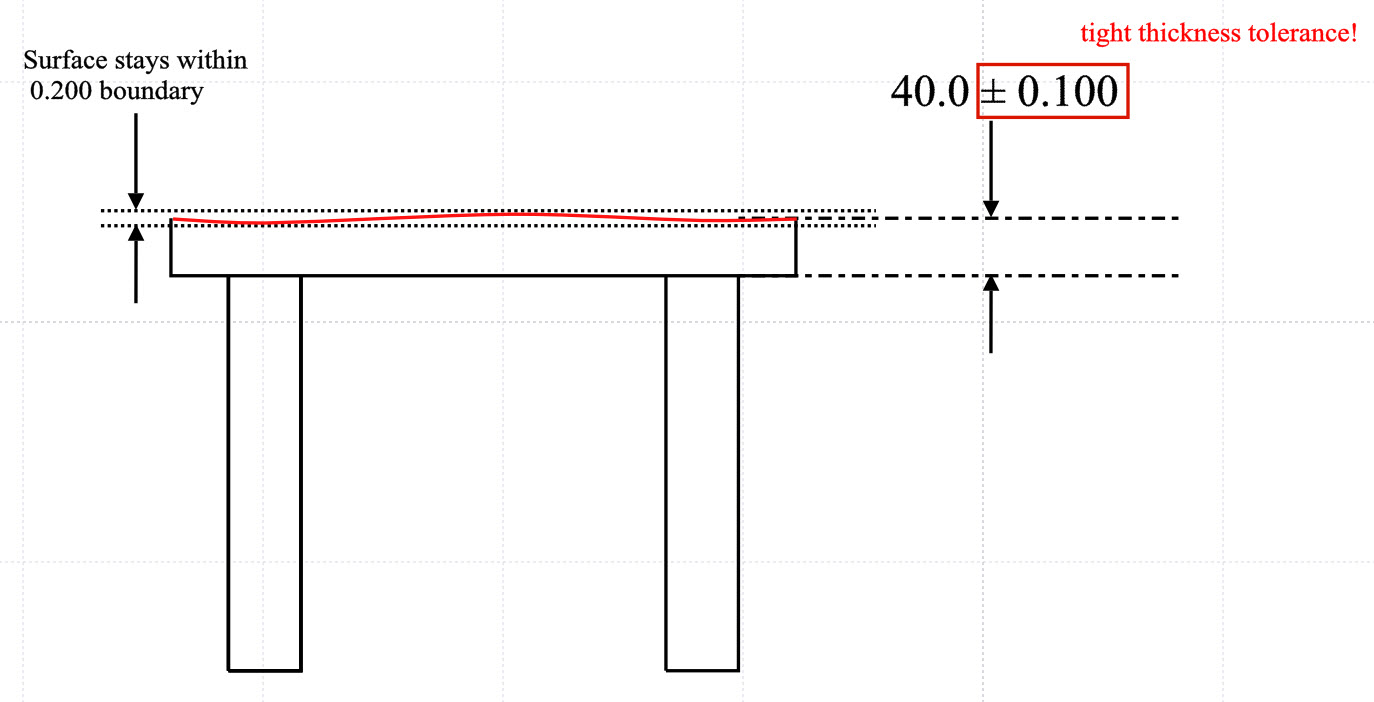
You must complete all course contact hours and successfully pass the learning assessment to obtain CEUs. Students should have basic knowledge and command of the GD&T ASME Y14.5 standard which provides guidelines for engineering drawing sheet layout. This course is valuable for individuals who create or interpret engineering drawings, product and gage designers process, product, and manufacturing engineers supplier quality engineers/professionals CMM operators buyers/purchasers checkers inspectors technicians and sales engineers/professionals. *Not covered in 2-day foundational-level course Who Should Attend Describe profile tolerance basic concepts and applications*.Perform position tolerance (RFS and MMC) special application and calculations*.Interpret applications of datum targets, size datum features (RMB), and size datum features (MMB).Interpret the various types of tolerance (flatness, straightness, circularity, cylindricity*, perpendicularity, parallelism, angularity*, position, runout, and profile).Describe the concepts of worst-case boundary, virtual condition, and bonus tolerance.Recognize the symbols and modifiers used in GD&T.Interpret the general dimensioning symbols*.Describe the types of dimensions, tolerances, and notes used on drawings.GD&T is, and has been, successfully used for many years in the automotive, aerospace, electronic and the commercial design and. Explain the importance of standards on engineering drawings* ASME Y14.5-2009 geometric dimensioning and tolerancing ( GD&T ) is a language of symbols used on mechanical drawings to efficiently, and accurately communicate geometry requirements for features on parts and assemblies.Learning ObjectivesĪfter completing this advanced-level course, you’ll be able to: For more complex GD&T topics, like the expanded use of composite position and profile tolerances, customized datum reference frames, the translation modifier, and applying GD&T to non-rigid parts, see our Advanced Concepts of GD&T course. This course provides a complete look at GD&T Fundamentals. The Fundamentals of GD&T Using Critical Thinking Skills (ASME Y14.5-2009) textbook by Alex Krulikowski.Newly acquired learning is reinforced throughout the class with more than 150 practice exercises, including more than 50 application problems. Additional thinking skills of application (applying the knowledge to a drawing).Examples of inspection methods for each geometric tolerance.Related and unrelated actual mating envelope.

The course can be conducted in three 8-hour sessions or with flexible scheduling including five mornings or five afternoons. This would make the first time assembly a bit quicker.This 3-day Fundamentals of GD&T course provides an in-depth study of the terms, rules, symbols, and concepts of geometric dimensioning and tolerancing, as prescribed in the ASME Y14.5-2009 Standard.

The instructions are handily printed on the bag, although we feel Vango could improve on these by including a diagram referring to the name of each piece of kit. Introduction In March 2009 the ASME has released a new Y14.5 standard, the first since 1994, and there is much in it of great interest and benefit. Lastly insert the bracer pole, which connects inside the awning to the main airbeams with velcro tabs, to increase tension in the roof. ASME Y14.5 2009 Standard Bill Tandler With editorial contributions from Evan Janeshewski and Ron Grube Multi Metrics & SmartGD&T 1.
#Asme y14.5 2009 flatness manual
Next blow up the airbeams (easy to inflate with the manual double handled pump included). We used webbing straps, which were thrown over the roof and pegged on the other side. Loosely pegging out the four corners, attach the awning to your camper either with the pre-attached 6mm kador strip (which fits straight onto a rail on your vehicle if you have one), or with webbing straps, velcro tabs or pole and clamps.
Expect the first time to take around half an hour, although after practice we easily managed to get this down to 10 minutes. It can also be used with any campervans and even motorhomes.Īfter a few goes, setting up the Idris II is a doddle. The Vango Idris II Airbeam Awning is a freestanding drive away campervan awning.


 0 kommentar(er)
0 kommentar(er)
